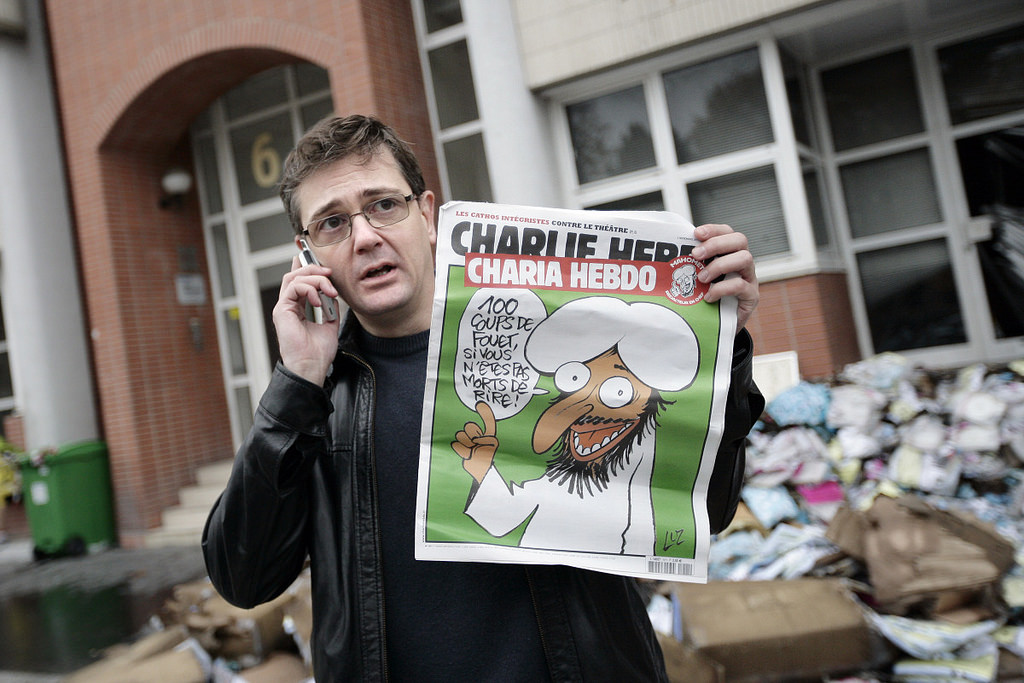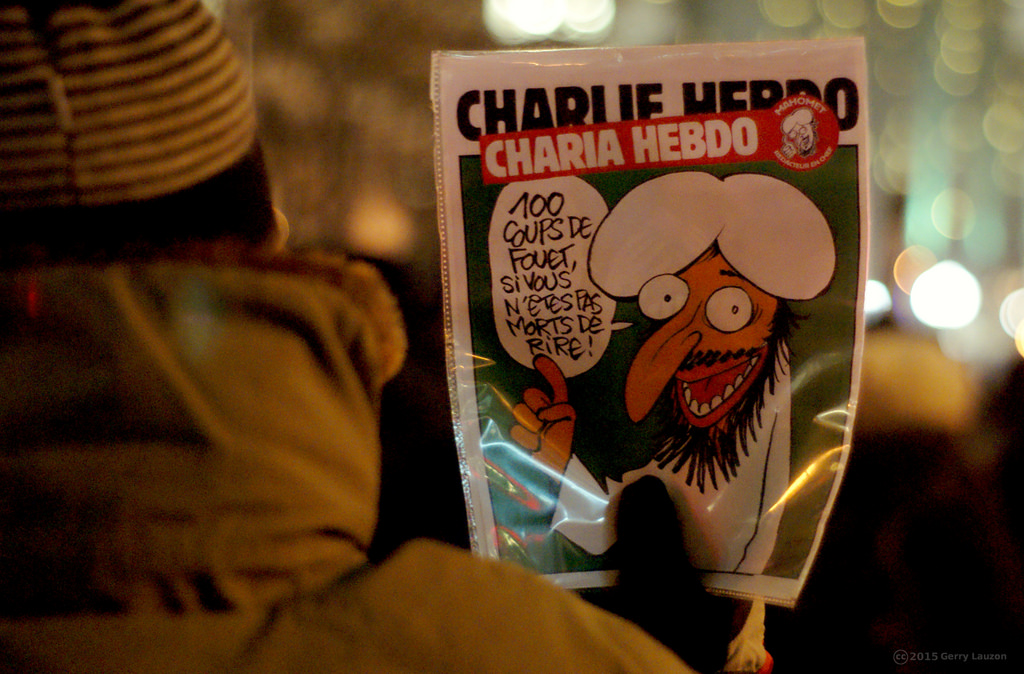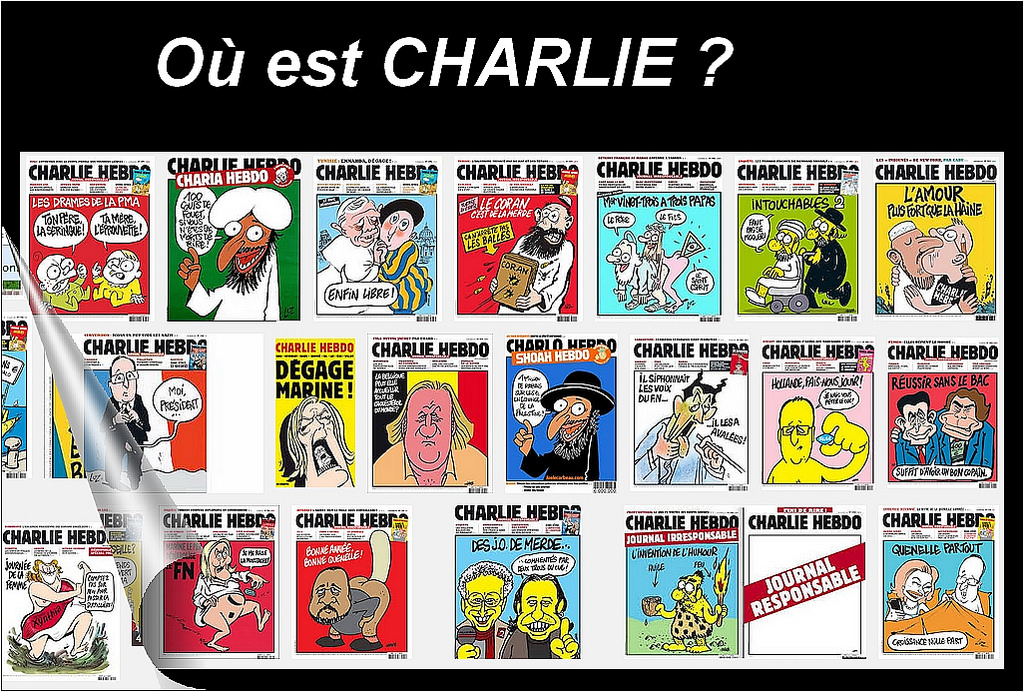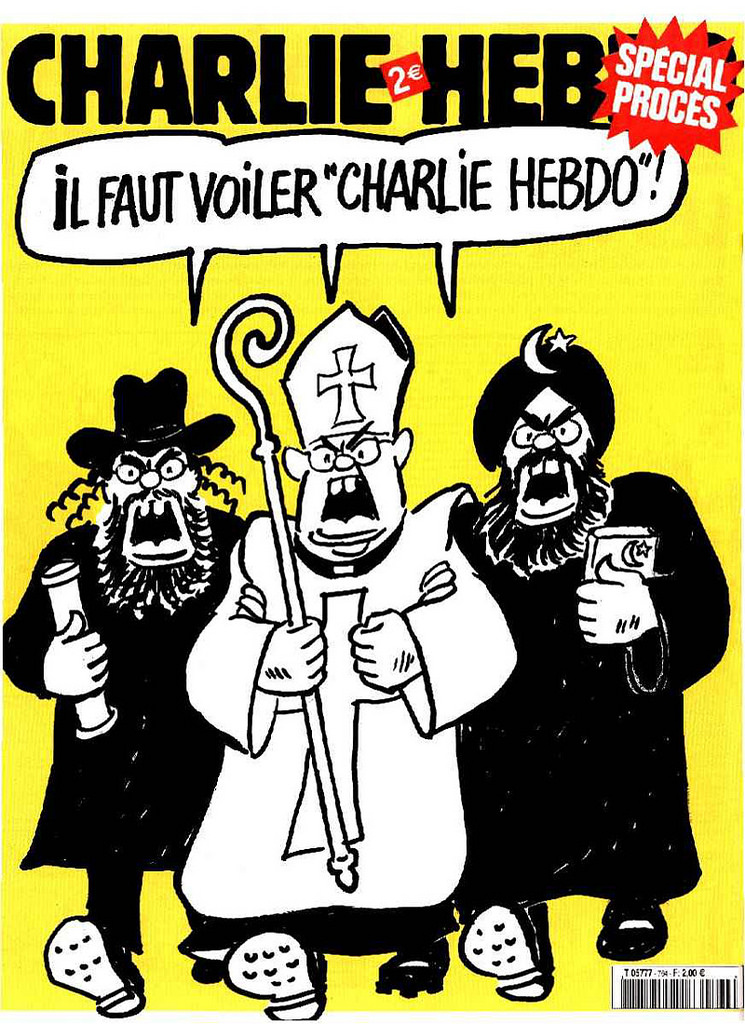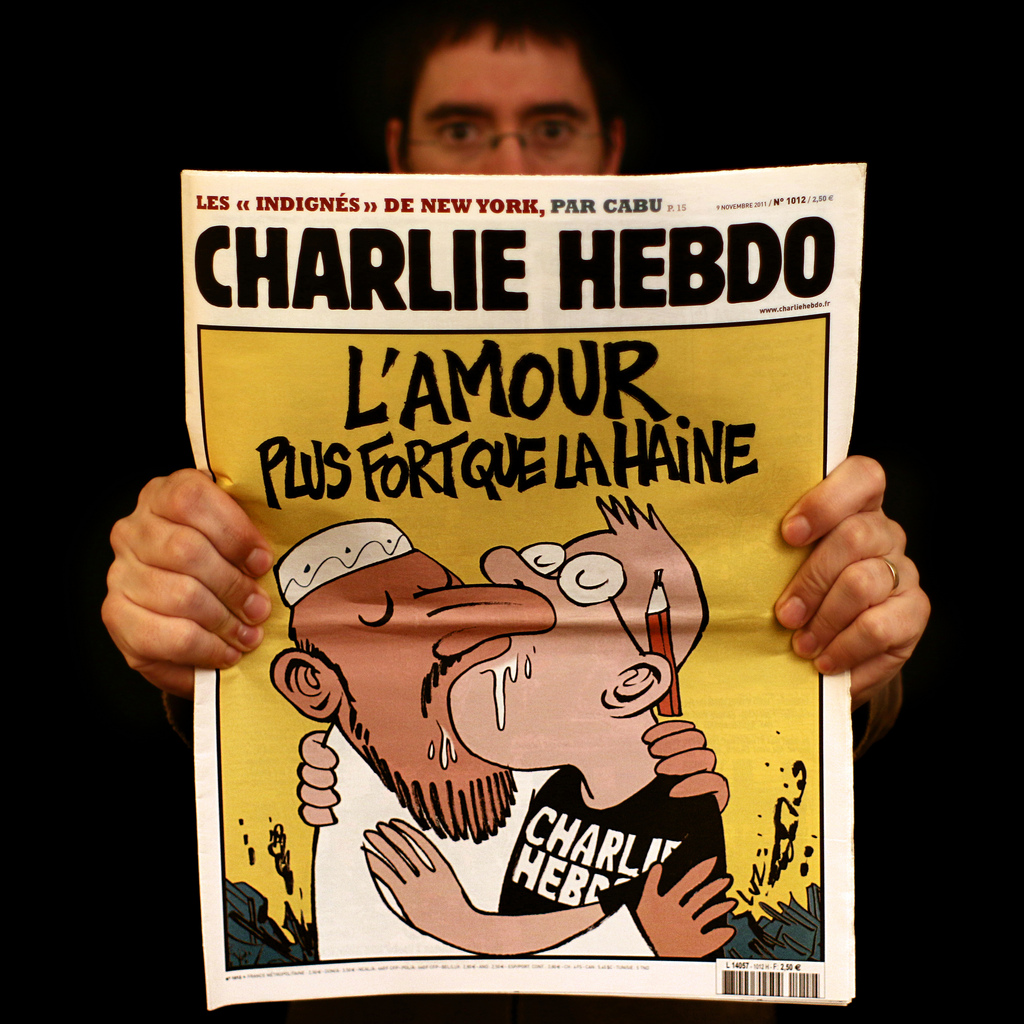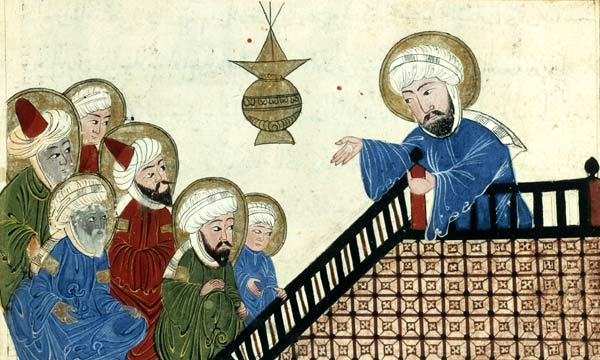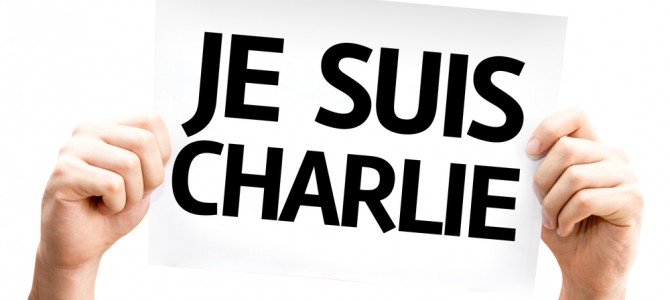
With straight faces and an apparent belief that we’d all forgotten the media coverage we’ve been subjected to in recent decades, editors and executives at many media outlets claimed this week that their well-established respect for religion prevents them from showing images that Muslim extremists have used to justify murderous terrorism.
Nobody believes this. Absolutely nobody on earth believes that American journalists operate with deference toward Baptists, Mormons or Catholics, much less an abundance of deference to same. The Episcopal Church? Sure. Nuns on the Bus? Absolutely. The Rev. Jeremiah Wright? Maybe. But even that’s not about religious deference so much as political tribalism.
In an email to Politico, New York Times executive editor Dean Baquet claimed that his paper doesn’t print blasphemous or offensive images even when relevant to a story:
“Here is how I made the call, and it wasn’t easy,” he continued. “We have a standard that is pretty simple. We don’t run things that are designed to gratuitously offend. That’s what the French cartoons were actually designed to do. That was their purpose, and for that publication it is a fine purpose. But it isn’t ours. So I had to decide whether it was so important to the story to show the drawings, important enough to drop the standard. And the answer was they were not. We could describe them. And anyone who wanted to see them could easily do so.”
A typical defense for not showing images related to a story (say, for instance, in a story about a lawsuit over lewd photographs) might be that you don’t need to see them to understand what they show. But that’s not what Baquet says. Quite the contrary:
“By the way, to really show what the fuss was about you have to show the most over the top drawings. Otherwise, people won’t really understand the story,” he added. “Go have a look at those. They would not have met the standards of most news organizations.”
He kept going in a later email:
And obviously don’t expect all to agree. But let’s not forget the Muslim family in Brooklyn who read us and is offended by any depiction of what he sees as his prophet. I don’t give a damn about the head of ISIS but I do care about that family and it is arrogant to ignore them.
This is not true. It’s absolutely not true that the New York Times cares one whit about the religious (or otherwise) sentiments of peaceful families in Brooklyn. If they did, they wouldn’t run so many depictions of anti-semitic caricatures in stories about anti-semitic caricatures. Or of blasphemous anti-Christian art in stories about blasphemous anti-Christian art. Or of gross ethnic and racial stereotypes in stories about gross ethnic and racial stereotypes. When the New York Times wrote about Catholic outrage over an art exhibit that featured a “black Madonna with a clump of elephant dung on breast & cutouts of genitalia,” that story featured a color photo of the art in question. Heck, it still does. Right there on the web site.
I’ll go further. If the New York Times’ deep respect for the religious sentiments of its readers affected its news judgment, it would know what Easter is. And it would have condemned Bill Keller, not promoted him and published his bizarre bigoted rants over the years.
It’s one thing for Dean Baquet to micturate on us. But it’s entirely another for him to tell us it’s raining.
Other demonstrably wrong claims
The New York Daily News has almost cartoonishly refused comment about its censorship, but David Burge did notice something curious about what does get censored and what doesn’t:
Selective pixelization: in pic of dead CH editor, NY Daily News blurs cartoon of Mohammed, leaves hooked-nosed Jew pic.twitter.com/yCEJPfBc3m
David Burge (@iowahawkblog) January 7, 2015
Now, why would we censor only one offending image and not the other? Why would we do that if we cared so much about all people not being offended or having their religion mocked?
And an Associated Press spokesman told the Daily Beast that “[n]one of the images distributed by AP showed cartoons of the Prophet Muhammad. It’s been our policy for years that we refrain from moving deliberately provocative images.”
But as Tim Carney of the Washington Examiner showed, not only will the Associated Press move pictures of a crucifix soaked in urine (the infamous “Piss Christ”), it will sell it to you for cash money. They moved and sold such images, at least, from 1989 until Carney reported on it. As John Carney, fellow journalist and brother, pointed out, Tim “accomplished with a phone call what Jesse Helms failed at for years: getting Serrano censored.”
CNN isn’t running any depictions of Charlie Hebdo covers that Muslim extremists might find offensive, but you will not be surprised that a huge color picture of Piss Christ is right here in “10 works of art that shocked the world.”
A history of one-sided censorship
It’s not like any of this is new. The media have been censoring cartoons that offend radical Islamists for years now. We went through all of this with the deadly Danish cartoon rampages that killed more than 100 in 2006 and with news that Yale University Press removed images of the cartoons from a book titled “The Cartoons That Shook The World.”
There was a story not one year ago about a Muslim politician in Britain tweeting out a picture of a cartoon where Jesus says “hey” to Muhammad and then Muhammad says “how ya doin?” back to Jesus. And this Muslim politician tweeted this out to defend his religion against the claim it was just a bunch of radical extremists. You will never guess what the British press did. Yes, they sided with the radical extremists even as some of them were calling for this Muslim politician to have his neck slit.
As Janice Turner wrote for The Times:
It was hard to watch Wednesday’s Newsnight without concluding that Britain has become a very strange place. We saw an artist so frightened for his life that his face and even his voice were disguised. We saw his hand sketching the Christian prophet in a crown of thorns, but forbidden to draw the Muslim one. An 11-minute film debated a drawing at the heart of a national controversy but at no point could we see it… When challenged, Newsnight’s editor, Ian Katz, said that there was “no clear journalistic case to use” the cartoon, and that “describing” it was sufficient. (TV news will get a whole lot cheaper if we needn’t send a camera crew to war-ravaged Damascus: let’s just have it described by Jeremy Bowen.) Any depiction of Muhammad, Katz argued, “causes great offence to many, not just extremists” and to run it would be “journalistic machismo”.
As they say, “A thousand words are worth a picture.” Also, “What good is photojournalism if you really think about it?”
It’s time to cut the B.S.
It’s time to stop lying about why many in the media don’t publish these cartoons. It’s not out of respect for religion, something the media could actually use a great deal more of.
It’s not about causing offense to many, or papers wouldn’t be running photos on the front page of gay couples making out or announcements of same-sex unions or what not. I don’t recall the New York Times discussing deference to pious families in Brooklyn when those began in 2002.
There’s one reason and one reason only why we’re not seeing any pictures of Muhammad (and contrary to what many in the media mindlessly tell you, depicting Muhammad is a debated issue among Muslims).
Journalists are absolutely terrified of Islamic extremists.
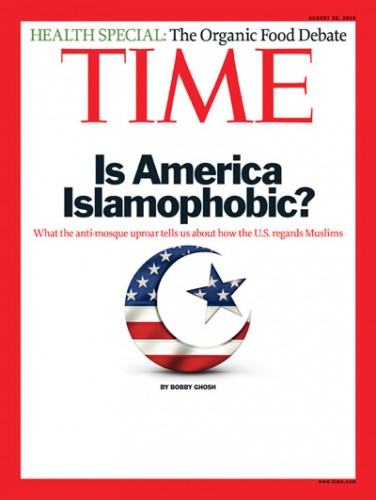 Do you remember a few years ago when the media were constantly accusing Americans of being “Islamophobic” every time any negative sentiment about Islamic extremism was expressed? Time magazine had a cover story with the headline “Is America Islamphobic?” I’m beginning to realize just how much projection this was.
Do you remember a few years ago when the media were constantly accusing Americans of being “Islamophobic” every time any negative sentiment about Islamic extremism was expressed? Time magazine had a cover story with the headline “Is America Islamphobic?” I’m beginning to realize just how much projection this was.
This story was, as is typical of the genre, awful. It didn’t really try to substantiate the claim of Islamophobia but it did say the magazine had conducted a poll that “found that 46% of Americans believe Islam is more likely than other faiths to encourage violence against nonbelievers.” As I wrote at the time:
Let's not forget that Islamophobia, is defined as the irrational fear of Islam. Belief that Islam is more likely than other faiths to encourage violence against nonbelievers could be based on a phobia, I suppose. It could also be developed from reading a newspaper, studying a recent poll, remembering the events of recent years, or having some knowledge of the different status accorded to nonbelievers in various countries. You don't even have to be non-Muslim to note those differences. It's neither criminal nor proof of bigotry to note that religions sometimes teach different things. Those differences include what they have to say about treatment of nonbelievers.
The media have made the claim that any fear of Islam is irrational. I don’t share that view, obviously, but if they’re going to make such a claim, they should own it. Because of all the people in the country who are acting on their fear of Islam, journalists are at the top of the list.
The Washington Post’s Erik Wemple has a piece headlined “Confirmed: Fear of terrorism is driving CNN’s editorial decisions.” He notes some of the silly explanations offered by other media chiefs (that they don’t run deliberately offensive images) before writing:
Yet the deliberately-offensive rationale is more defensible than the one offered this morning by CNN Worldwide President Jeff Zucker. According to a story by CNNers Brian Stelter and Tom Kludt, Zucker opened an editorial meeting this morning with the following message: “‘Journalistically, every bone says we want to use and should use’ the cartoons, Zucker said. But ‘as managers, protecting and taking care of the safety of our employees around the world is more important right now.’”
I actually disagree with Wemple. Cowardice is a far more defensible rationale than whatever false pretext others are offering.
Besides, publicly acknowledging that the safety of your employees is threatened by Muslim extremists is a good first step to dealing with the problem, no?
Brian Carney (yes, another brother!) put it well in a series of tweets that began here:
So, is it fear or respect that motivates those who argue that it's provocative to republish #CharlieHebdo cartoons? I didn't hear anyone say, for example, that rioters in Ferguson were "provoking" the police to more violence. "We should not be irresponsible and provocative" strikes me as a profoundly dishonest position here. It's substance disguised as procedure. It also treats those offended by the cartoons like dogs, as reactive creatures driven by impulse, rather than humans capable of thought. So this supposed religious respect actually becomes a form of deep bigotry, or at least an appeal to others' bigotry. It implies that "we" can be trusted to behave as civilized people, but "they" cannot.
Greg Pollowitz said of media outlet claims that the images won’t be published out of respect, “these statements aren’t honest. They’re not publishing the cartoons because they fear for overseas employees.”
Carney, who’s the former editorial page editor at the Wall Street Journal Europe said, “I’m not totally without sympathy for that. I had this debate after the Danish cartoons,” adding, “but let’s acknowledge then that we are making ourselves hostage to extremism, not acting out of respect.”
Exactly. The story in the self-censorship is that global news organizations won’t publish these cartoons out of fear. We should not be told the self-censoring is a matter of principle when it’s a matter of abject and degrading fear. It is even understandable that journalists would be terrified. But they shouldn’t continue to tell us a story that isn’t true. That they’re terrified of Muslim extremists is important. It’s an important story. It can’t continue to be covered up in lies about respect for religion or sensibilities. We aren’t idiots. We know the media hasn’t cared too terribly much about the sensibilities of readers and viewers who don’t share their opinions. Particularly their religious views.
Masquerading cowardice
Republishing the cartoons that Muslim extremists used to justify murderous rampages is easy. It’s what readers and viewers needed to see to evaluate a story. Media outlets were showing far more incendiary images throughout the day, including a police officer being executed in broad daylight. If viewers and readers can handle that and if they can handle reading or watching a story about a sick slaughter at a newspaper, they can see the cartoons. It’s that simple. It shouldn’t even be seen as particularly courageous. That so many media outlets couldn’t even do that is terrifying, of course.
Real courage, of course, would be publishing brand new material going after Muslim extremists. Instead we got what Iowahawk called cowardice masquerading as courage:
Once again, cowardice masquerading as courage. pic.twitter.com/M8xJQeKz88 h/t @cjosied
David Burge (@iowahawkblog) January 8, 2015
As horrific as the Charlie Hebdo bloodbath is, no journalist working today should be surprised by it. No journalist is surprised by it. We have the burgeoning ISIS caliphate beheading journalists who have done nothing to offend Islam so why would anyone be surprised that mockers of Islam might also be killed? Wall Street Journal reporter Daniel Pearl was murdered nearly 13 years ago. Salman Rushdie’s Japanese translator was killed, following the order of the Ayatollah Khomeini, in 1991. That same year the Italian translator survived a brutal stabbing. Two years later the Norwegian publisher survived being shot three times in an assassination attempt. Actually, I’ll stop listing all the brave journalists and publishers who have lost their lives or had their lives threatened by Islamist extremists as it would take far too long. But the point is, none of this is surprising. And Islam alone among the world’s major religions includes this large minority devoted to or supportive of such acts of terror.
Which is why cartoons like the ones above are cowardice masquerading as courage. The Methodists might hate your stupid cartoon, but there is no movement to assassinate you for it. Mormons might light up your switchboard when you make your 28th joke about something they hold sacred, but they’re not going to firebomb your offices. And even if the progressive or conservative activist group du jour threatens an advertiser boycott if you don’t fire your cartoonist, that’s not really the equivalent of marching into your newsroom, calling out staff by name and shooting them in the head. It’s not “extremists” you’re worried about and it’s not courageous to claim so. It’s cowardly.
The one trend we can’t deal with
After every one of these gruesome attacks, journalists quickly push out stories that express concern about a violent backlash against Muslims, or that praise candlelight vigils or other gestures of solidarity, or that provide nuanced explanations — of how to understand the attackers, of why people shouldn’t jump to conclusions about the meaning of such violent attacks, of how there’s no larger narrative in play. You know the type:
After the Charlie Hebdo attack, we must resist the clash-of-civilisations narrative http://t.co/I9pGI4HFLk
The Guardian (@guardian) January 8, 2015
There’s an old joke about how a journalist counts to three: “one, two, trend.” But no matter how many acts of crazed terror we see, from a newspaper in Paris to a cafe in Sydney to a school in Peshawar to parliament buildings in Ottawa, to the underground in London, to the street killing of soldier Lee Rigby in London, to ethnic cleansing in Nigeria to a mall in Nairobi to a caliphate in Iraq and Syria, for some reason we are not supposed to see a trend or have anything coalesce into a narrative.
That’s not journalism. That’s a media ignoring the reality of how scared they are. That’s a media completely unable to address how the worldviews they’ve helped peddle might not be up to the task of confronting the problems we face.
Coddling New York Times readers
A few years ago on 30 Rock, there was this exchange:
Jenna: You've got to lie to her, coddle her, protect her from the real world. Jack: I get it. Treat her like the New York Times treats its readers.
I thought of that when I found this prescient letter to the editor in the New York Times from Aaron Shmulewitz in mid-December:
I agree wholeheartedly with your editorial that Sony’s decision not to release “The Interview” constituted “capitulation,” “will establish a dangerous precedent that could further embolden rogue regimes and criminals” and “sends a signal to Mr. Kim and other criminals that they can succeed in extortion if they are creative and devious enough.”
You’re absolutely right that an organization that deals in ideas should not allow itself to be cowed by threats over an unpopular expression of them. So when can we expect The New York Times to publish the Danish cartoon depictions of the Prophet Muhammad that you chose not to, several years ago?
Indeed. When can we expect that? It is capitulation to hide those images or those from Charlie Hebdo. There is no question that it establishes a horrific precedent that emboldens the worst among us. It does send a signal that terrorism works.
The New York Times is terrified. It’s scared of Muslim extremists. Muslim extremists have cowed the paper into submission. And they and others in our media have been lying about it.
It’s time to stop lying.
UPDATE: Journalist Jeffrey Weiss writes in the comments, “Has The Federalist published the cartoons? Even in this piece, the only example is the pixellated version of one of them. Seems to me that an critique like this should be accompanied by a *bunch* of the cartoons, some attacking Muslims and some attacking religious positions the Federalist holds dear. Else, it’s hard to see where you occupy the high ground.”
